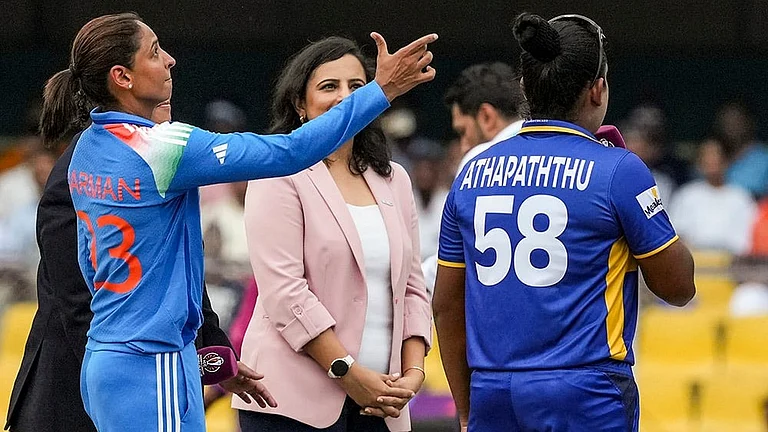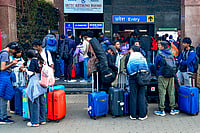At Our Doorstep
- Working expats in India 100,000
- Annual growth in working expats 30%+
- Expats working in heavy industry 15,000
- Expats employed in IT sector 6,000
- Hiring cost of expats Vs their home country cost 3-5 times
- Annual expat tourist inflow 350,000
The Changing Rules
- Expats on 180-day visas have been set an Oct 31, 2009, deadline to leave India, reapply for work permits.
- Expat employees to be limited to one per cent of project workforce or 20 people in Indian projects.
- Gap of two months necessary to re-enter India on tourist visa.
- Prior security clearance being strictly enforced for conference visas from some countries.
The Impact
- For starters, both expats and Indian companies say the new rules lack clarity.
- Many Indian companies grappling with new limits for expat workers, need labour ministry approval for exemptions.
- Attendance at conferences, short-term business meets hit as strict compliance is imposed.
- Tourists deterred from returning to India after travelling around the region.
***
When 28-year-old Marie Leray, a French national living in Mumbai since 2008, tried to renew her employment visa last autumn, her India dreams started morphing into a nightmare. Marie could not get a stamp of approval from the local Foreigners’ Regional Registration Office (FRRO), which she needs to continue working in India. All she got was an ‘Under Consideration’ stamp.
So whenever Marie leaves India—and this happens about twice a month, as she works in airport retail—she must visit the FRRO and get every departure pre-approved. Since September 2009, the FRRO has stamped rows of temporary permits that let her leave and re-enter the country but her employment visa hasn’t been extended. She can’t say why. “Now, when I go to the FRRO, the officers are angry,” she says. “They want to know why I’m back and why I have to leave. It really is a nightmare.”
In January, three months into Marie’s ordeal—and there are many others in similar situations—the government finally announced a restriction limiting foreign workers to one per cent of the total workforce on a project. Now, she thinks the FRRO officers were perhaps overzealous in her case. “I had no problems getting an employment visa. Why should renewal be such an issue?” she asks.
By then, Marie’s parents, both 65 and retired in France, had secured tourist visas and showed up in India. After a few weeks touring Orissa and West Bengal in January, they made for Sri Lanka. While they were away, India changed the rules for tourists as well: her parents could not be let back in for at least two months. Stranded in Colombo for two days, many phone calls and faxes later, they barely made it back to catch their flight home. “My parents liked India but they’re not coming back after this—no,” says Marie.
In an India hungry for world attention, many see the growing numbers of international tourists and relocating expatriates as a conquest. In recent years, buoyed by rapid economic growth, around one lakh expats—people such as Marie—have moved to work in Indian metros, especially as growth in their Western economies slowed. Some say the numbers of expatriates are growing by 30-40 per cent every year.
For Indian companies, too, global recognition goes hand-in-hand with a global workforce. But the expatriate employee—that banker who has worked with hedge funds in New York, or that Japanese powertrain expert you can’t find at home—is also a necessity for firms trying to match up to global manufacturing and service standards. Many companies are afraid the tight visa restrictions will hit Indian brands. “Indian technology companies are competing with the big boys of the world but they’re still inherently Indian. Broader diversity is a significant challenge,” says Joy Nandi, a partner with Korn/Ferry, a global hiring consultancy. According to Nandi, the one per cent limit could have an adverse impact on several industries.
What has baffled everyone who is affected—industry, foreign workers in India, short-term business visitors and tourists—is that India often rails against similar restrictions by other nations. It isn’t going down well that Indian delegations travel to South America, asean or Singapore and demand greater flexibility for Indians to travel and work when exactly the opposite happens at home.
At the heart of the government’s argument in favour of the various visa restrictions (see graphic above) is the claim that it will improve security and prevent unskilled and semi-skilled workers from coming into India, particularly those who enter without appropriate permissions—such as the Chinese employees of power plants recently found illegally working in India. Trouble is, the intent to control illegal unskilled immigrants seems to have struck a blow at skilled and highly skilled expatriates as well.
For Germain Araud, country manager for Altois International, a French consultancy, the recent visa regulations have struck a heavy personal blow. Working in India for the last five years, and renewing work visas without difficulty until last year, he had to struggle for a permit this time around. He got his visa, but his partner is in France, waiting for hers—the application has neither been rejected nor approved. “Six months before the Commonwealth Games, how can India be playing around with visa rules? Especially when it is clear that India does not give officials the means to implement what they’ve set out to do,” he says. “The officials yell at you, but I speak Hindi, I understand—they don’t want to work and it’s frustrating.”
Similarly, the Indian consulate in Mauritius recently denied employment visas to two Infosys employees flying in for a project. “It’s not like Infosys will try and bring in unskilled or semi-skilled labour,” fumes T.V. Mohandas Pai, board member and director (human resource), Infosys (see interview). His hunch, like that of many others, is that the regulations are basically an overreaction to Chinese workers being brought in, coupled with security concerns.
Nevertheless, the impact can border on the bizarre. Ilse Koehl, a German national who has lived in India for the last 10 years, says she made it back to India from Germany a day before the restrictions kicked in and set to work organising a conference in Rajasthan in association with local and German NGOs for saving the camel. “It has never been so hard before to organise visas for participants in India. It’s impossible to get even an answer from local officials. To expect that we produce specific, individual approvals is too much,” she says.
It’s not as if the new impositions are clear to businesses either. As Pricewaterhouse Coopers executive director Kuldip Kumar asks, “Is the one per cent limit meant for projects? Or holding companies? We can make only reasonable interpretations.” Sure, the US is making h1b rules stricter and the UK has tightened student visas, but India’s rules have their typical stamp: lack of clarity.
Mark Runacres, a former diplomat and coordinator at British Business Group, New Delhi, a platform for British and Indian companies, says, “Yes, we are hearing considerable concerns. The challenge is in finding out what the new regulations mean. As far as I am aware, no official public statement has been made. We are hoping for some clarity.”
Raju Bhatnagar, vice-president of IT industry association Nasscom, has a different view: “The one per cent limit is not strictly a ‘cap’—we’ve come to see it as a procedural trigger. A company in India can employ one per cent foreign nationals, as long as they don’t exceed 20 in all. If you want to hire additional people, you’ll need ministry of labour approval.” This is the first time the Union labour ministry has been involved in the visa process.
Any way you look at them, the new regulations are harsh. Civil society is already up in arms over why the government had to re-enforce old rules on people attending conferences in India. Tourists are upset and angry, and both employers and employees are struggling with paperwork. In all this, what hurts most is brand India—clearly not as global as it wants to be.
By Pragya Singh with Arti Sharma


























